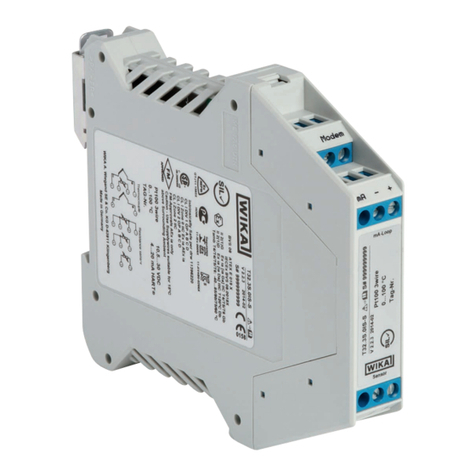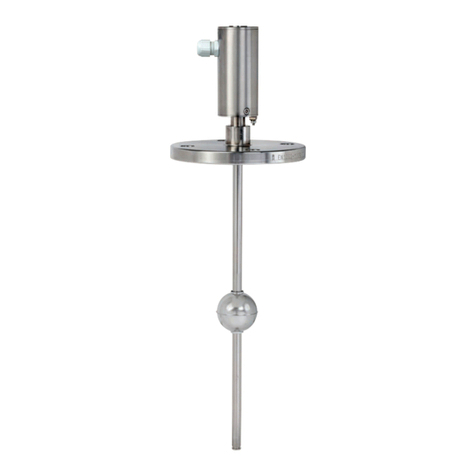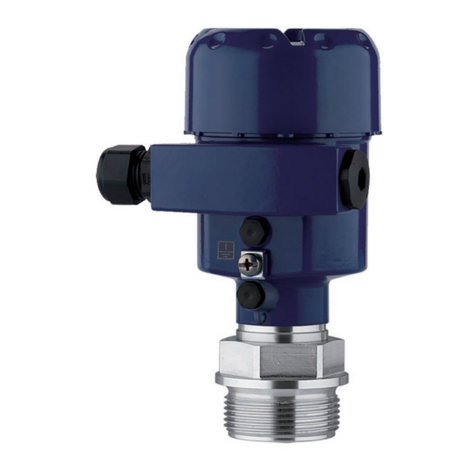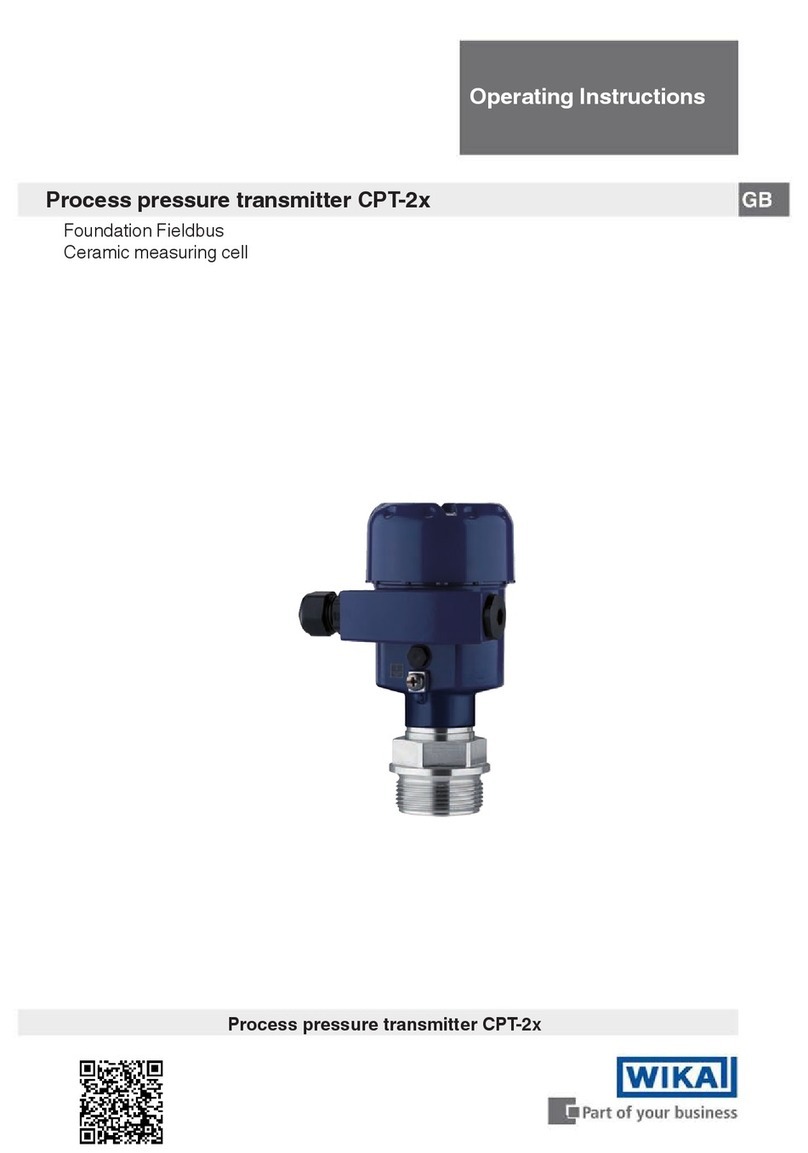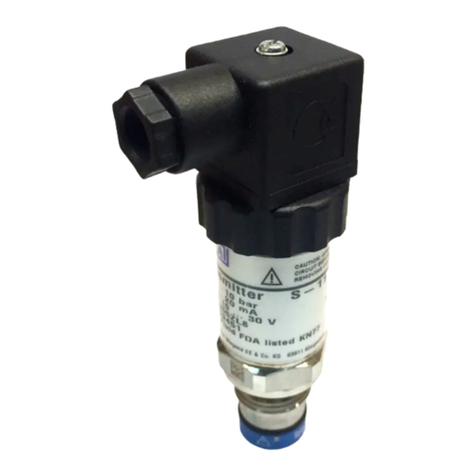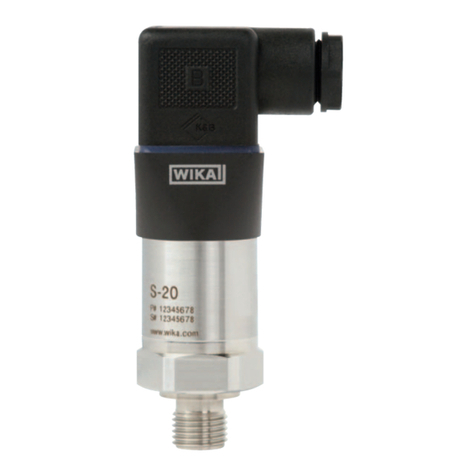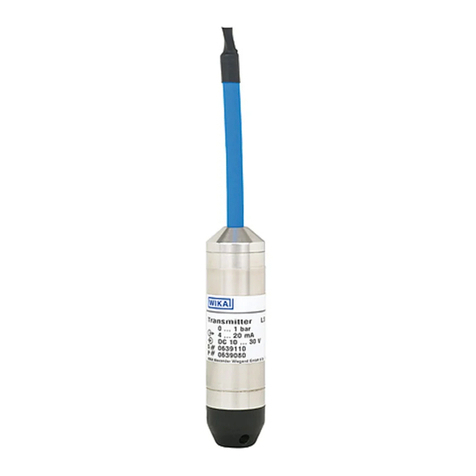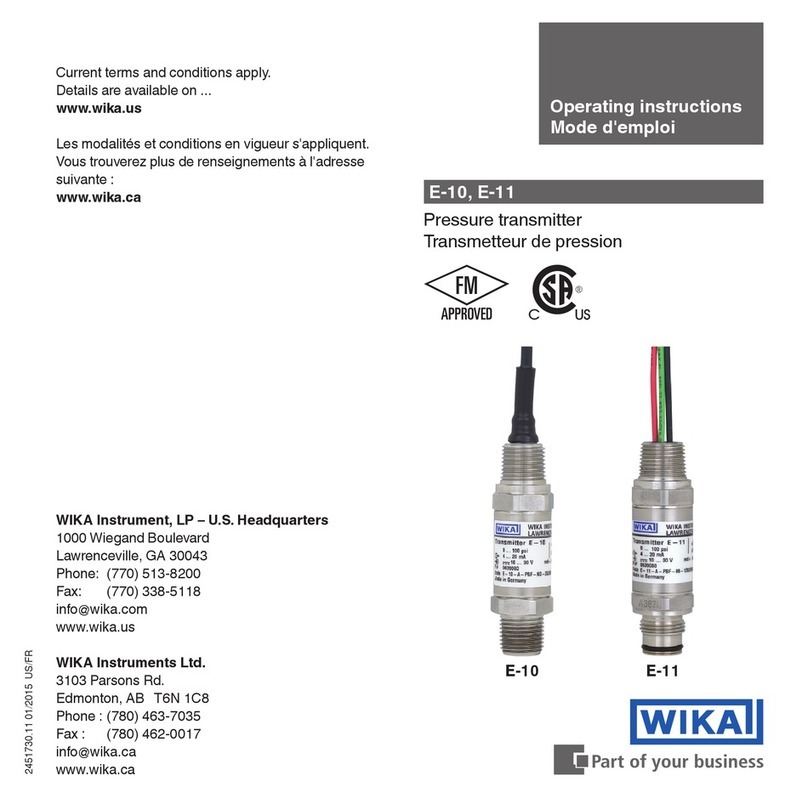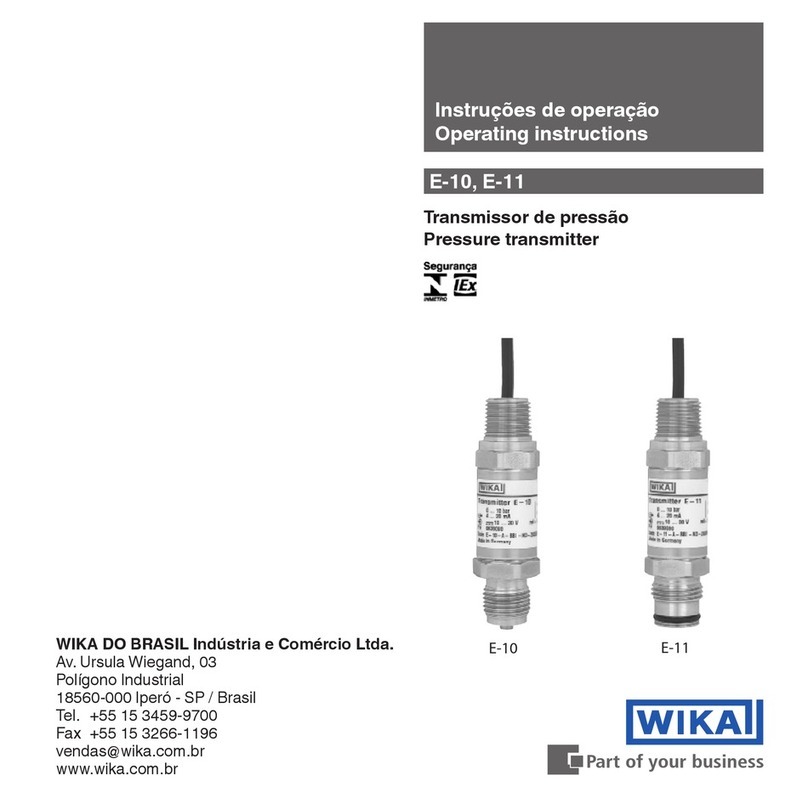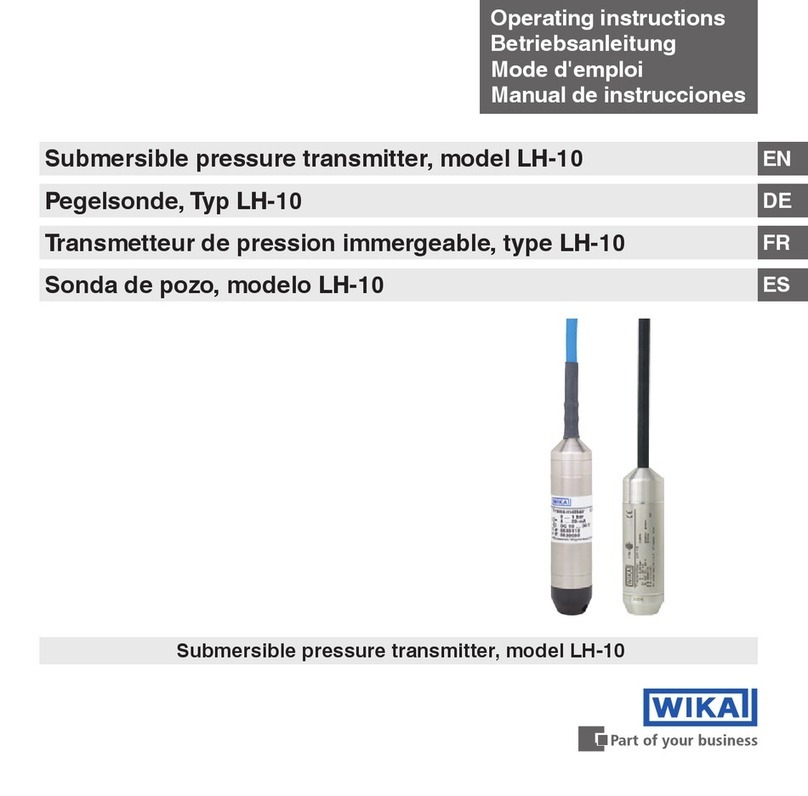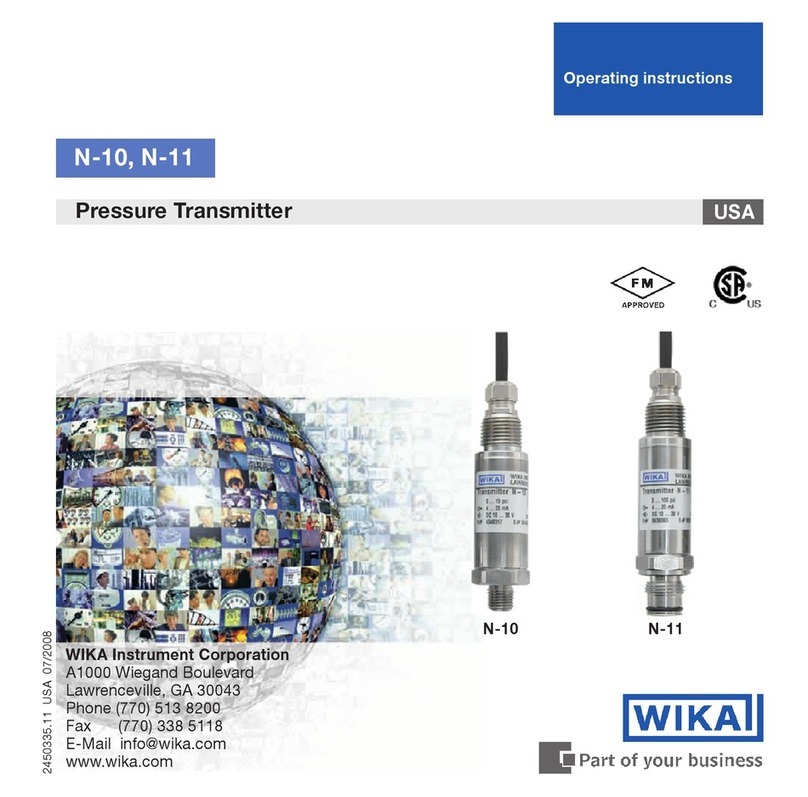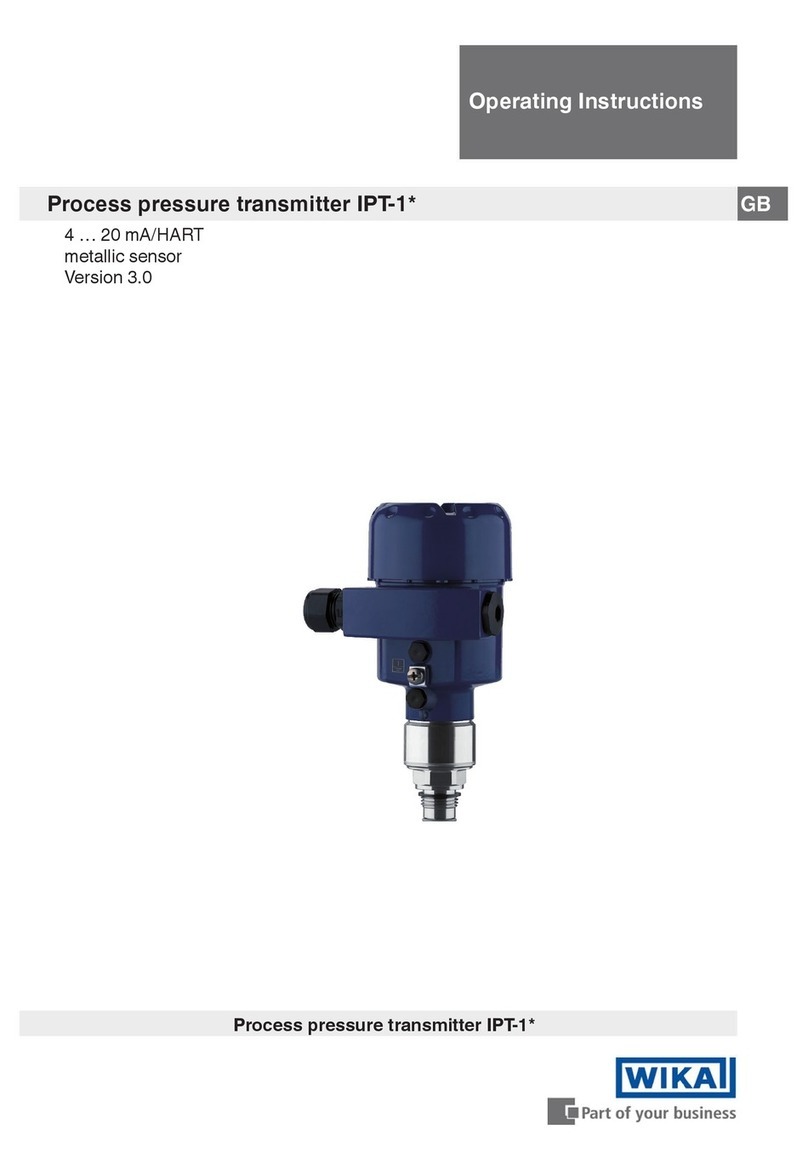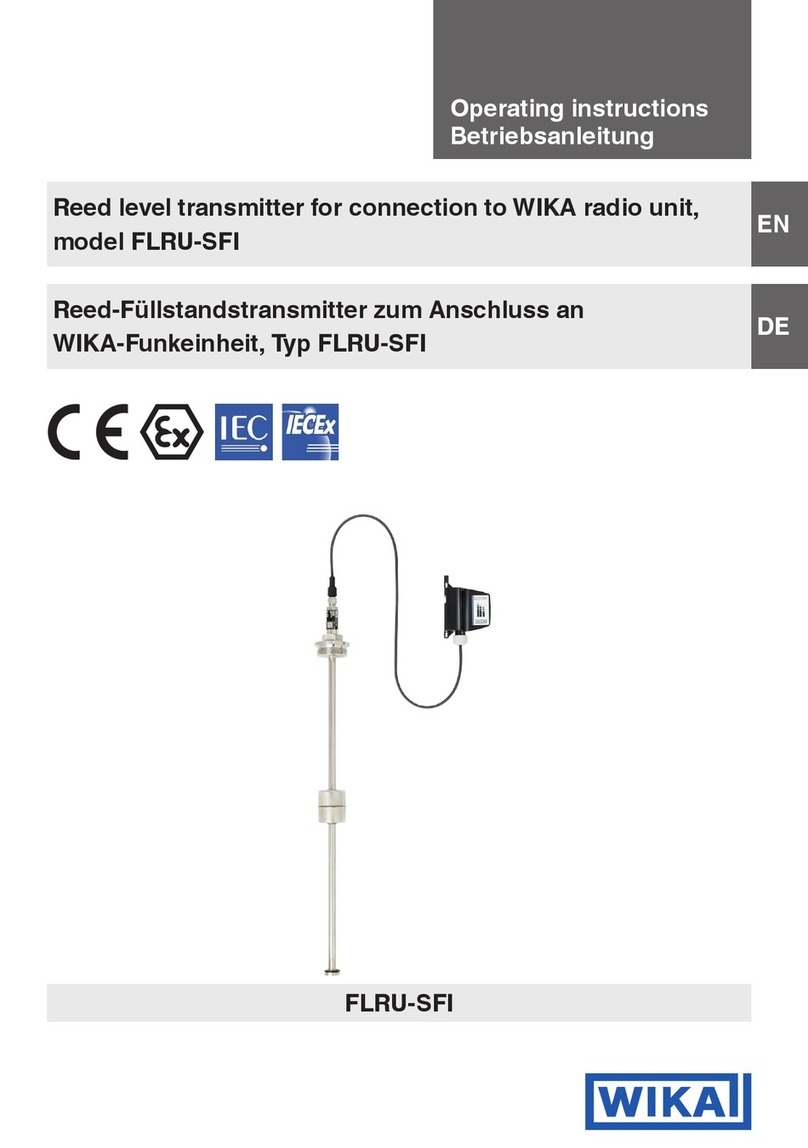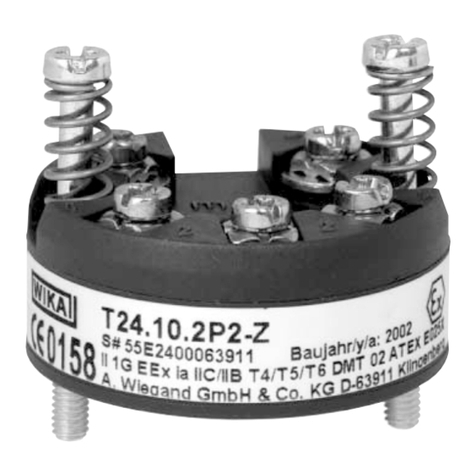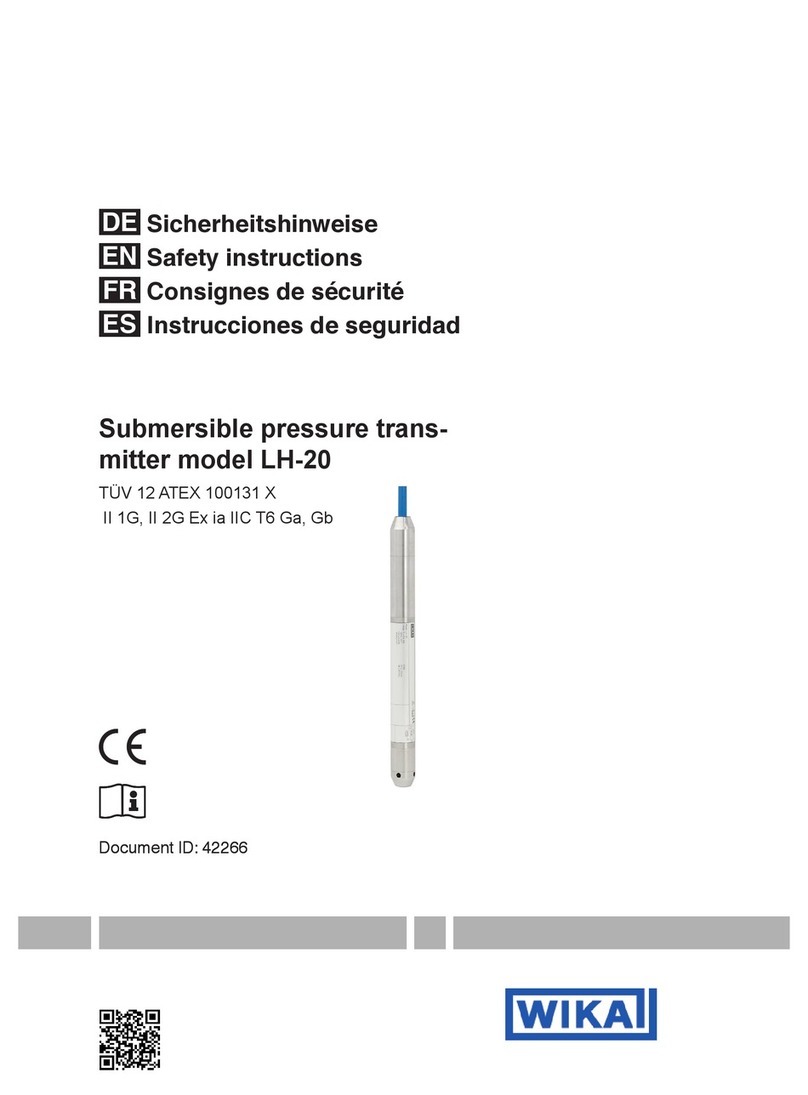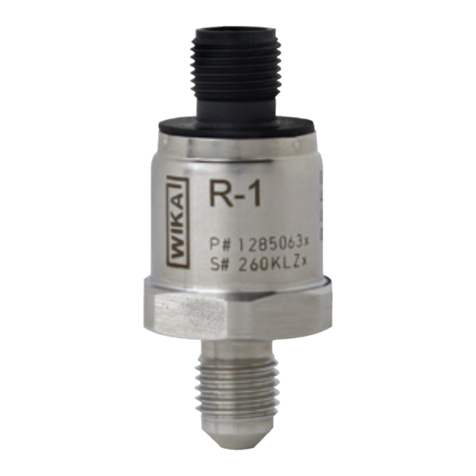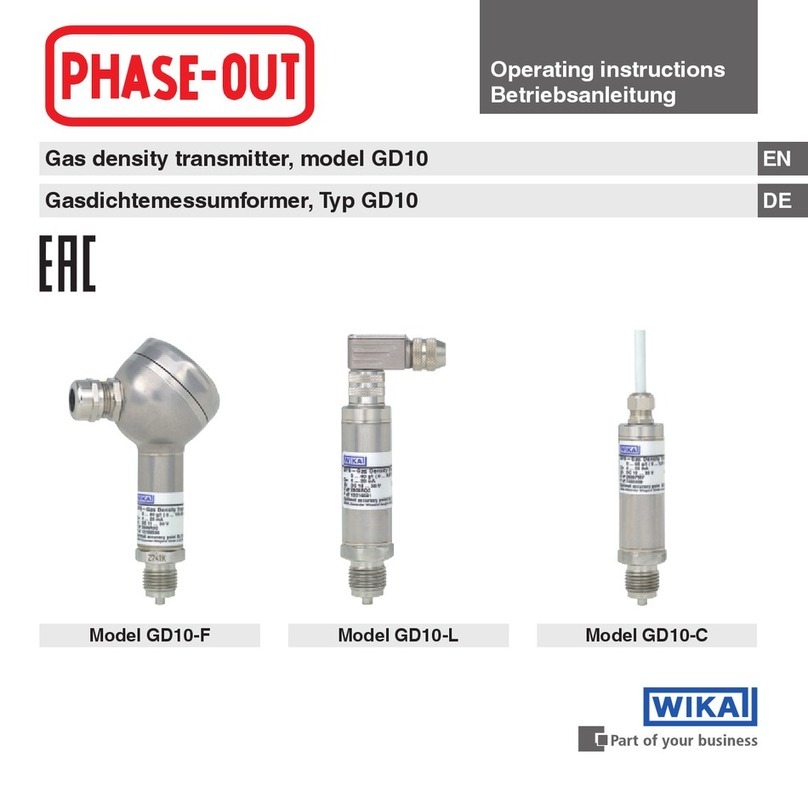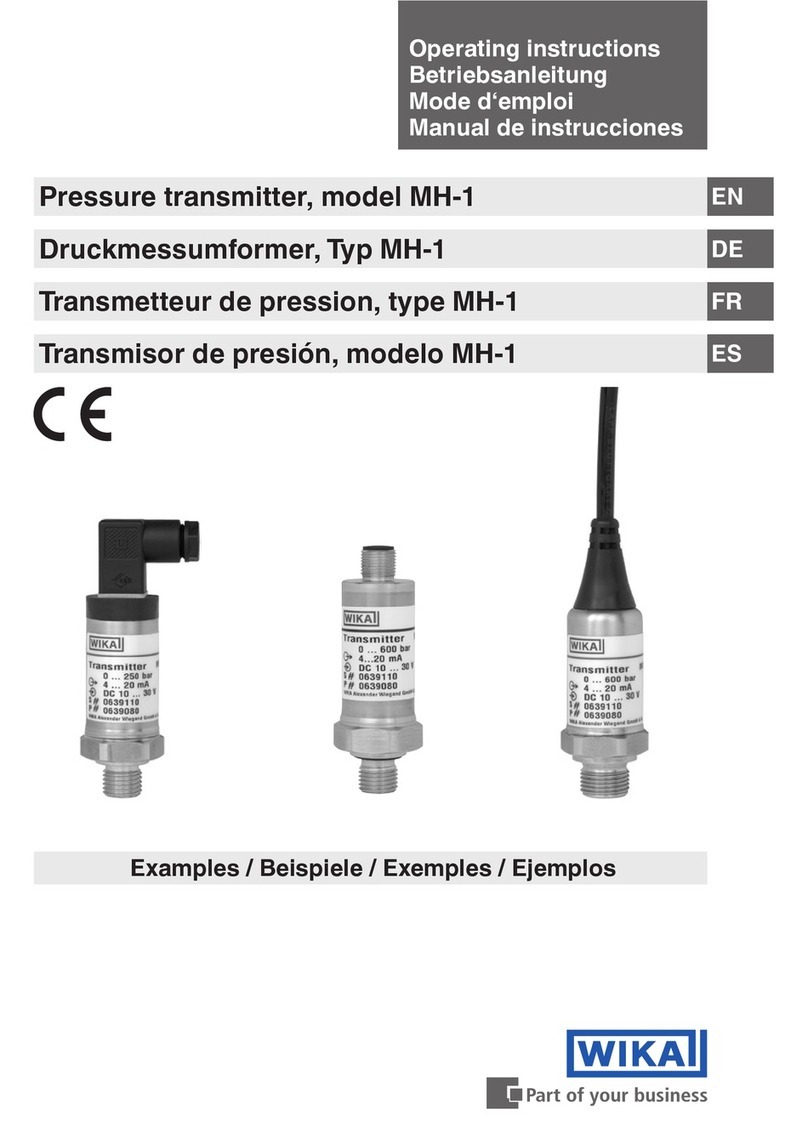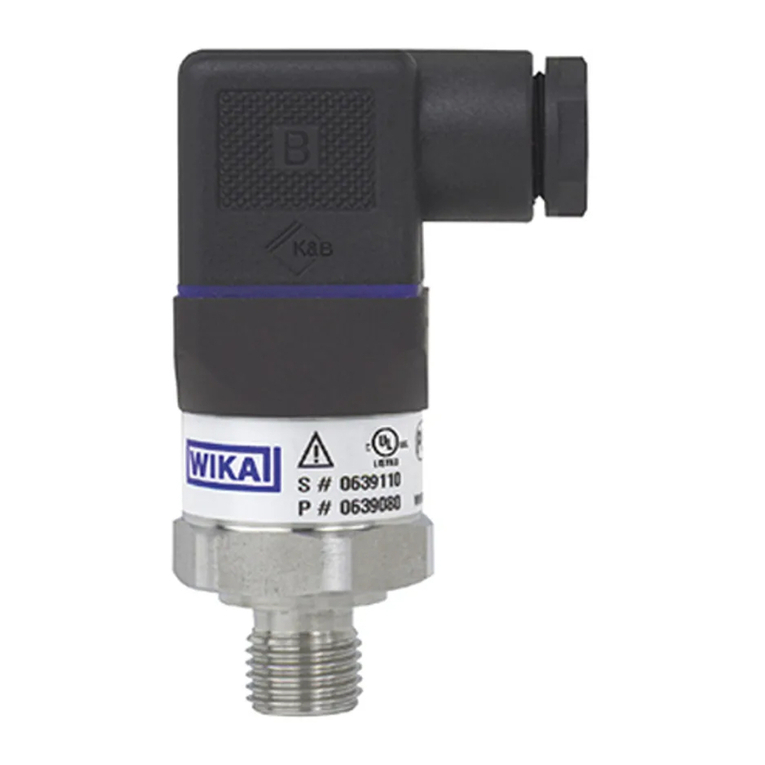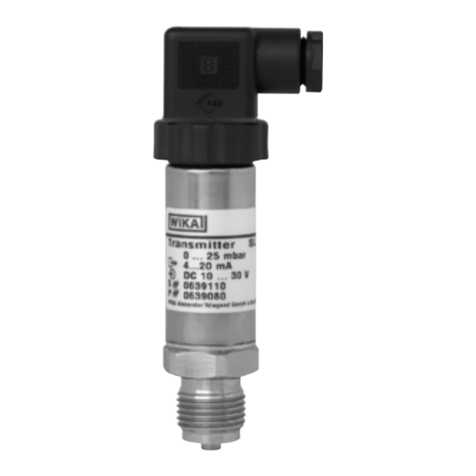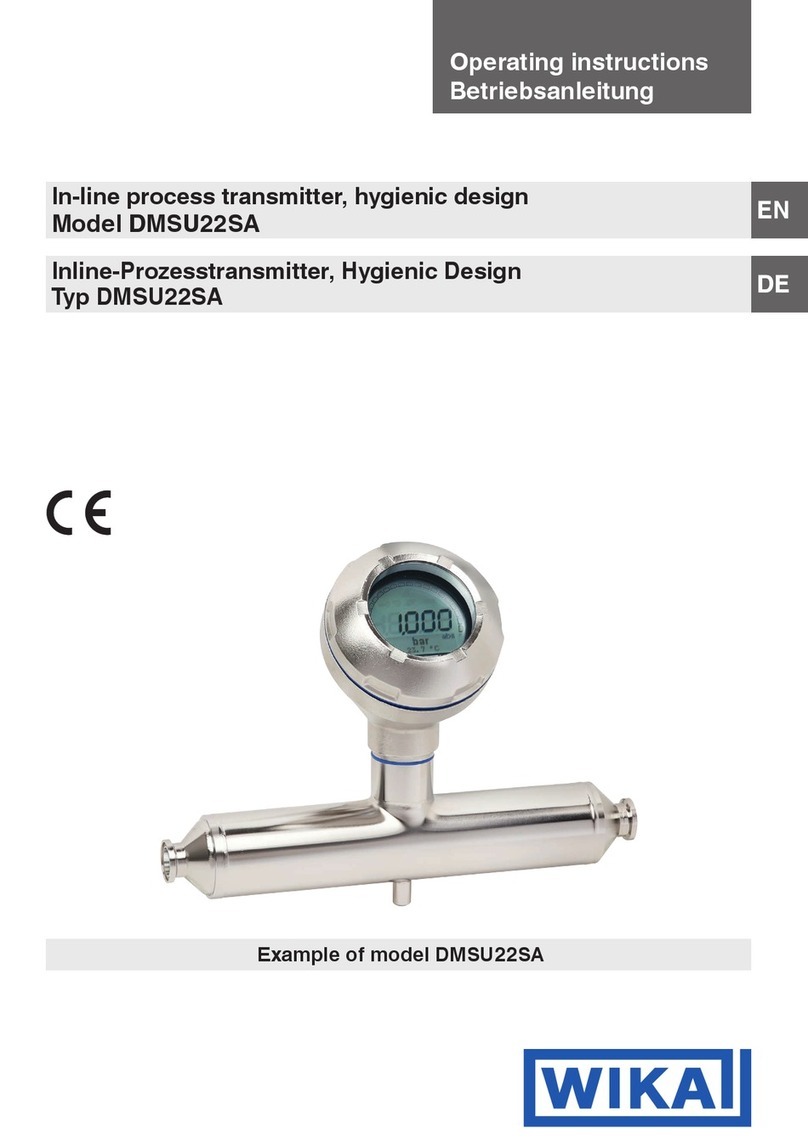
11116552.11 EN/DE/FR/ES 03/2022
8WIKA operating instructions pressure transmitter, models E-10 and E-11
EN
3.5 Special hazards
DANGER!
Danger to life due to loss of explosion protection
Non-observance of these instructions and their contents may result in the loss of explosion protection.
▶
Observe the safety instructions in this chapter and further explosion protection instructions in these
operating instructions.
▶
Observe the information given in the applicable type examination certificate and the relevant country-
specific regulations for installation and use in hazardous areas (e.g. IEC 60079-14, NEC, CEC).
WARNING!
Physical injury and damage to property caused by hair-line cracks
The service life of the pressure transmitter is limited by a maximum number of load cycles.The maximum
number depends on the pressure prole of the application (extent of change in pressure, time of pressure
rise and pressure drop, ...). Once the maximum number of load cycles has been exceeded, it can lead to
leaks through hair-line cracks, which can cause physical injury and damage to property.
▶
Request the maximum number of load cycles from the manufacturer.
▶
Replace the pressure transmitter once it has exceeded the maximum number of load cycles.
▶
Take safety measures to eliminate hazards due to hair-line cracks.
WARNING!
Physical injuries and damage to property and the environment caused by hazardous media
Upon contact with hazardous media (e.g. oxygen, acetylene, ammable or toxic substances),
harmful media (e.g. corrosive, toxic, carcinogenic, radioactive), and also with refrigeration plants and
compressors, there is a danger of physical injuries and damage to property and the environment.
Should a failure occur, aggressive media with extremely high temperature and under high pressure or
vacuum may be present at the instrument.
▶
For these media, in addition to all standard regulations, the appropriate existing codes or regulations
must also be followed.
▶
Wear the requisite protective equipment.
3. Safety






